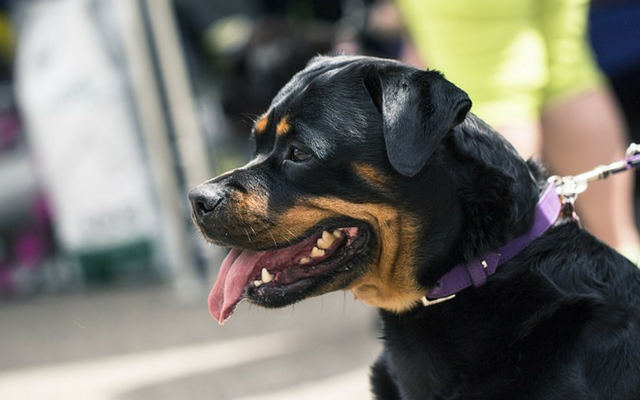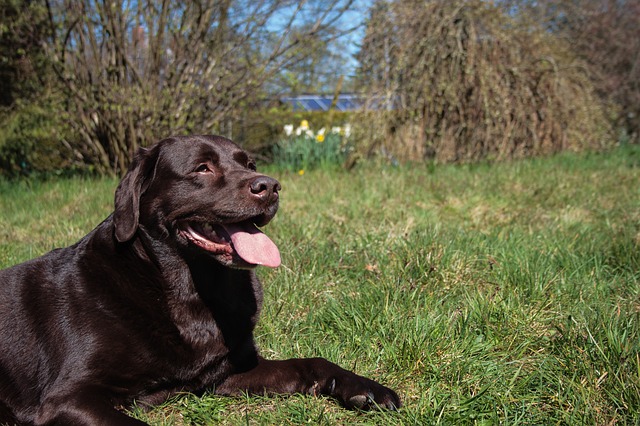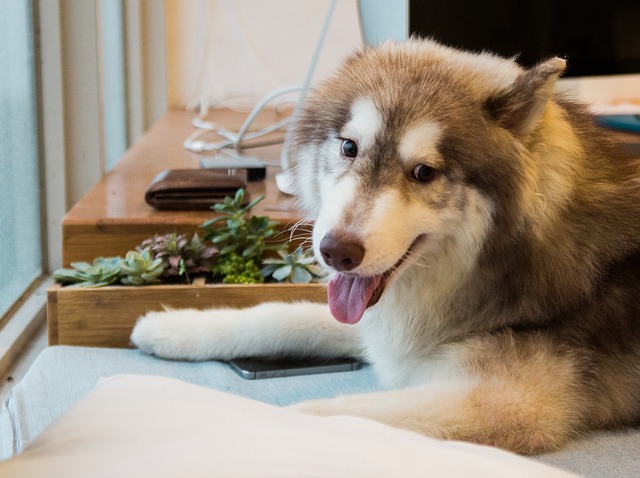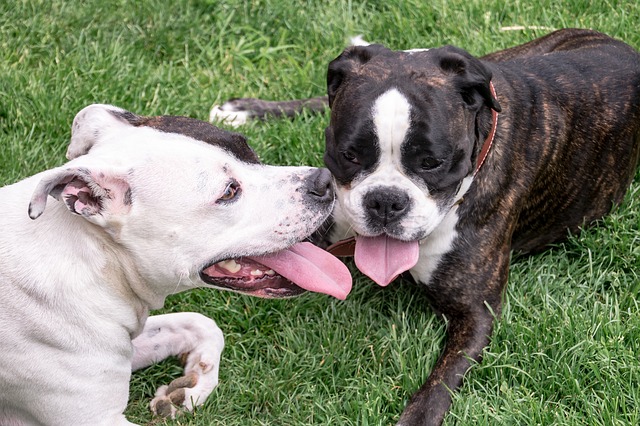Like chasing tennis balls and wagging their tails, panting is one of those classic canine behaviors we’ve all learned to expect. It’s completely normal in many situations, but there are also times when a dog’s panting isn’t quite right.
They do it for a number of perfectly natural reasons, but it could also be a sign your dog is suffering either emotionally or physically. It’s up to you to know the difference, but that’s harder than it sounds.

Normal Panting
Dogs only have sweat glands on the bottoms of their paws and in their ears, and that means sweating isn’t a viable way to cool down like it is for humans. Panting is what they do instead. The sudden intake of breath related to panting causes moisture in the dog’s respiratory tract to evaporate. The evaporation cools them down and helps the body better maintain a normal temperature. According to Healthy Pets,
“The normal (non-panting) breathing rate for dogs is 30 to 40 inhalations and exhalations per minute, but a panting dog can take 10 times that many breaths per minute (300 to 400).”
Because the purpose of panting is to help regulate body temperature, it’s considered an essential bodily function. Without it, dogs would easily overheat and have no way of controlling it.
Here are examples of when it’s completely normal for a dog to start panting.
- During and directly after exercising or playing
- When it’s hot outside
- When they’re excited about something

Abnormal Panting
The more time you spend with your dog, the easier it’ll be to decipher the difference between normal and abnormal panting. In general, abnormal panting is described as panting that’s heavier than usual. That’s a vague definition, and it can be different for every dog. Brachycephalic breeds like Pugs and Shih Tzus, for example, have shortened nasal passages that can restrict airflow and cause panting. Dogs that are overweight also have neck fat pressing against their airways that can make breathing more difficult. It’s recommended to observe your dog during regular exercise to gauge their normal level of panting. Panting that is especially intense is considered abnormal.
Besides the energy involved in the panting, situational context can also help determine whether or not it’s normal. Panting for no obvious reason is a sign something isn’t right. A dog shouldn’t be panting if they’ve spent the last few hours relaxing in an air conditioned room.
Here’s a list of things that indicate panting isn’t normal.
- The dog is at rest
- It’s not hot
- The panting is considered intense
- The panting sounds raspy or wheezy
- The dog’s gums are blue, purple, or white
- The dog seems lethargic or unresponsive
Depending on the underlying cause, noticing any of these signs in your dog could warrant an emergency vet visit.

Reasons for Abnormal Panting
Heat Stroke
Heat stroke is one of the most common and most dangerous reasons behind abnormal panting. The dog pants because they’re hot, but the situation has escalated to be potentially life-threatening. Healthy Pets writes,
“If your dog’s body temperature gets to 109 degrees Fahrenheit or higher, heat stroke is the result. The cells for the body rapidly start to die. The brain swells, causing seizures. Lack of blood supply to the GI tract causes ulcers. Dehydration leads to irreversible kidney damage. And all these catastrophic events take place within a matter of minutes.”
Other signs a dog is overheating include glazed eyes, a bright red tongue, and elevated heart rate. Cooling them down quickly is essential. Use cool water to gradually lower their temperature. This article from iHeartdogs gives more information on exactly what to do.
Stress
Panting is a common way for dogs to communicate stress. It can mean they’re anxious about a specific situation, afraid, or generally unhappy with what’s going on around them. They could start panting during a storm because they don’t like the sound of thunder or when guests arrive because they’re nervous around new people.
To help your dog, you’ll first need to determine what the stressor is. When you notice the panting, look around for possibilities. The best thing for the dog is to have the stressor removed from their life. But if that’s not possible, you can help them cope with their anxiety with desensitization conditioning. This method of training gradually exposes the dog to what’s bothering them in a safe way to help them change how they feel.

Pain From an Injury
Pain caused by a recent injury can be the culprit behind a dog’s abnormal panting. If there are no normal reasons for their heavy breathing and they look otherwise okay, the cause could be an underlying medical issue.
An open wound or broken leg is an obvious reason for the dog to be in pain, but other times, panting is one of the only noticeable symptoms. If they were recently hit by a car, they could look normal but suffer from internal bleeding. Joint pain can also make older dogs want to pant as a way to communicate their problem and soothe themselves. If you suspect an injury is to blame, visit the vet as soon as possible.
Medical Conditions
Panting for seemingly no reason can sometimes be a side effect of an undiagnosed medical condition. It can be pain related, and other conditions provoke panting in an attempt to oxygenate the blood stream. Many of these conditions are life-threatening, and it’s important to seek help from a professional.
Cushing’s Disease: Cushing’s disease is a condition where the dog’s body produces too much of a stress management hormone called coritsol. Other symptoms include a pot-bellied abdomen, hair loss, and increased urination. Read more about it here.
Heart Failure: Heart disease is as dangerous in dogs as it is in people. When the heart fails to pump an adequate amount of blood throughout the body, tissue suffers from a lack of oxygen. Increasing the respiratory rate is the body’s natural attempt to remedy the situation.
Lung Disease: Pulmonary hypertension and chronic obstructive pulmonary disease are possible conditions that affect canine lungs. Dogs can also develop lung cancer. Any disruption in normal respiratory function can make breathing more difficult. Panting is the body’s version of working harder to get more oxygen into the bloodstream.
Tracheal Collapse: Small breed dogs are most at risk of developing tracheal collapse. It happens when the dog’s windpipe is either weakened or malformed. Airway is restricted, and the dog has trouble taking normal breaths. Panting as the result of a collapsed trachea usually sounds more raspy than normal. The dog might also have discolored gums and go into coughing fits.
Overall, there are several situations with potential to cause abnormal panting. If the panting is especially intense and you’re concerned it’s related to a serious medical issue, don’t hesitate to schedule an appointment with a veterinarian.
h/t: Healthy Pets, WebMD
